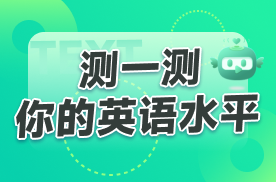2017职称英语《理工C》试题:阅读判断专项练习(1)
2016-06-30 11:30
来源:互联网
作者:
Inventor of LED
When Nick Holonyak set out to create a new kind of visible lighting using semiconductor alloys, his colleagues thought he was unrealistic. Today, his discovery of light-emitting diodes, or LEDs, are used in everything from DVDs to alarm clocks to airports. Dozens of his students have continued his work, developing lighting used in traffic lights and other everyday technology.
On April 23,2004, Holonyak received the $500,000 Lemelson-MIT Prize at a ceremony in Washington. This marks the 10th year that the Lemelson-MIT Program at the Massachusetts Institute of Technology (MIT) has given the award to prominent inventors.
"Anytime you get an award, big or little, it's always a surprise," Holonyak said.
Holonyak,75, was a student of John Bardeen, an inventor of the transistor, in the early 1950s.
After graduate school, Holonyak worked at Bell Labs. He later went to General Electric, where he invented a switch now widely used in house dimmer switches.
Later, Holonyak started looking into how semiconductors could be used to generate light. But while his colleagues were looking at how to generate invisible light, he wanted to generate visible light. The LEDs he invented in 1962 now last about 10 times longer than incandescent bulbs, and are more environmentally friendly and cost effective.
Holonyak, now a professor of electrical and computer engineering and physics at the University of Illinois, said he suspected that LEDs would become as commonplace as they are today, but didn't realize how many uses they would have.
"You don't know in the beginning. You think you're doing something important, you think it's worth doing, but you really can't tell what the big payoff is going to be, and when, and how. You just don't know," he said.
The Lemelson-MIT Program also recognized Edith Flanigen,75, with the $100,000 Lemelson-MIT Lifetime Achievement Award for her work on a new generation of "molecular sieves". That can separate molecules by size.
1.Holonyak's colleagues thought he would fail in his research on LEDs at the time when he started it.
A. Right
B. Wrong
C. Not mentioned
2.Holonyak believed that his students that were working with him on the project would get the Lemelson-MIT Prize sooner or later.
A. Right
B. Wrong
C. Not mentioned
3.Holonyak was the inventor of the transistor in the early 1950s.
A. Right
B. Wrong
C. Not mentioned
4.Holonyak believed that LEDs would become very popular in the future.
A. Right
B. Wrong
C. Not mentioned
5.Holonyak said that you should not do anything you are not interested in.
A. Right
B. Wrong
C. Not mentioned
6.Edith Flanigen is the only co-inventor of LEDs.
A. Right
B. Wrong
C. Not mentioned
7.The Lemelson-MIT Prize has a history of over 100 years.
A. Right
B. Wrong
C. Not mentioned
2017年职称英语试题《理工C》阅读判断专项练习题答案
1.A。题干:当Holonyak开始研究时,他的同事们曾认为他的有关LEDs的研究将会失败。利用题干关键词Holonyak和colleagues等可以定位到第一段第一句,该旬说:“When Nick Holonyak set out to create a new kind of visible lighting using semiconductor alloys,his colleagues thought he was unrealistic.”可知他的同事认为他是不现实的,所以题干与原文意义吻合,故选A。
2.C。题干:Holonyak认为和他一起进行这个项目的学生迟早会获得Lemelson.MIT奖。利用题干关键词Lemelson.MIT进行定位,发现通篇文章没有提到Holonyak相信他的学生将获得Lemelson.MIT Prize这件事,故答案为C。
3.B。题干:Holonyak于19世纪50年代早期发明了晶体管。利用题干关键词1950s可以定位到第四段,可知发明晶体管的是Holonyak的老师John Bardeen,不是Holonyak本人,所以答案为B。
4.A。题干:Holonyak认为LED在未来会变得很常见。利用题目顺序与段落顺序一致的原则和题干关键词LED可以定位到第六段的句子“…he suspected that LEDs would become ascommonplace as they are today…”,commonplace与popular的意思相近,故选A。
5.C。题干:Holonyak认为你不要去做任何你不感兴趣的事情。利用题干关键词interestedin,发现通篇文章没有提到“不要做你不感兴趣的事”,故答案为C。
6.C。题干:Edith Flanigen是LED的唯一合作发明者。利用题干关键词Edith Flanigen和co-inventor进行定位,发现通篇文章没有提到Edith Flanigen是Holonyak发明LEDs的合作者,更不要说是唯一的合作者,所以答案为C。
7.B。题干:Lemelson-MIT Prize已经有100多年的历史。利用题干关键词Lemelson-MITPrize可以定位到第二段,该段提到,2004年是the Lemelson.MIT Prize成立10周年,按此推算,the Lemelson-MIT Prize是在1994年设立的,所以答案为B。
(编辑:何莹莹)







